
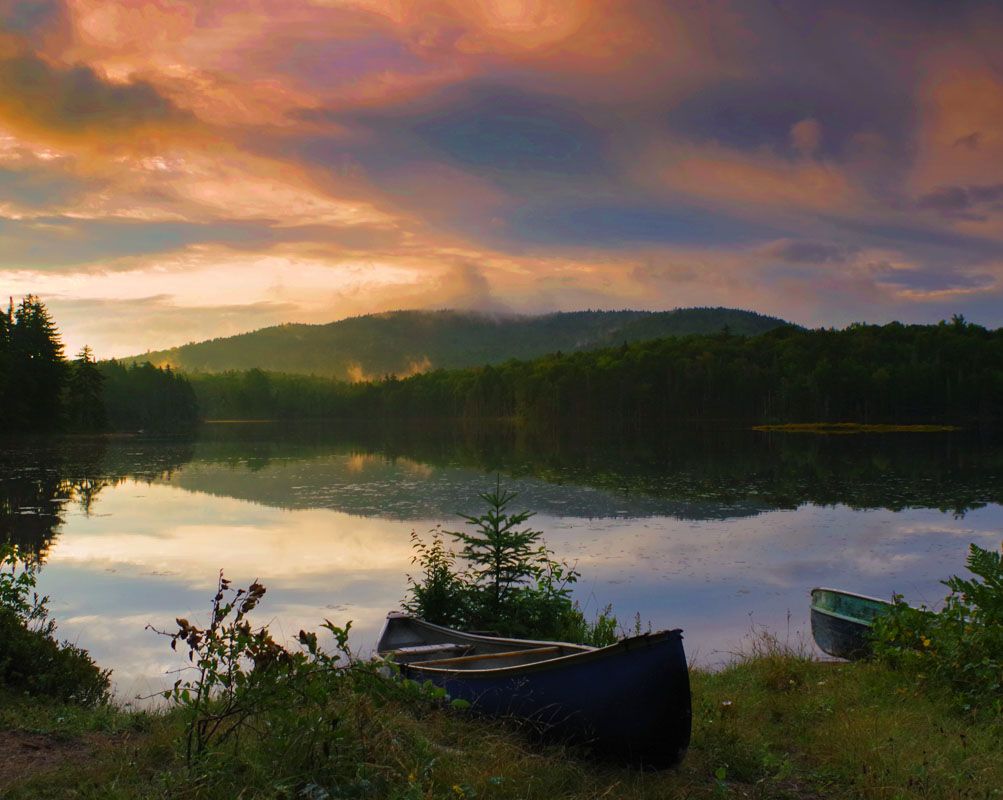
The recreational camping movement in America began in April 1869 when a young minister named William Henry Harrison Murray published Adventures in the Wilderness: Camp-Life in the Adirondacks. In his book, Murray encouraged city dwellers; men, and women, to leave urban life behind and experience the wilderness of upstate New York, offering activities such as sleeping under the stars and engaging in wilderness pursuits. His book gained widespread popularity, leading to a surge of visitors to the Adirondacks in the summer of 1869, known as "Murray's Rush."
Following in Murray's footsteps, advocates like Kate Field, an American author and travel writer, played a significant role in promoting camping. Field's efforts were particularly noteworthy as she actively encouraged women's participation in camping. Her organization of camping trips for women in the Adirondacks and beyond and her articles advocating for female campers led to the creation of more accessible and female-friendly campsites. The combined efforts of Murray, Field, and others paved the way for recreational camping to take root in the Adirondacks and eventually spread across America.
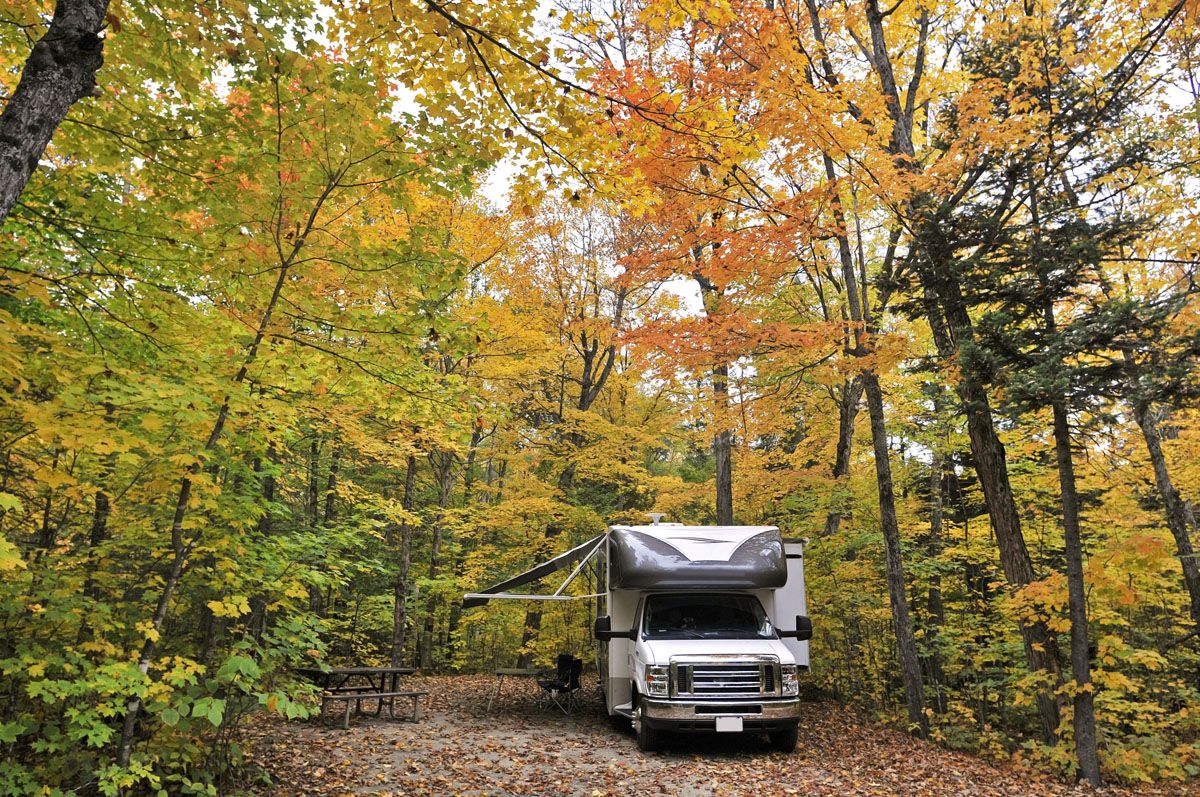
To thoroughly understand the history of camping in America, delve into Terence Young's book Heading Out: A History of American Camping, published by Cornell University Press. Terence Young, an experienced camper since the age of six months and an emeritus professor of geography at California State Polytechnic University- Pomona, provides comprehensive research and valuable insights into the history of camping.
With the growing popularity of recreational camping, campers began seeking more comfortable shelters than traditional tents. Companies like Eureka and others improved tents, but some campers found a more comfortable solution in RVs or recreational vehicles. These vehicles, which offered built-in amenities and comfortable sleeping arrangements, marked a significant shift in camping comfort and convenience.
My wife and I consider ourselves very seasoned campers. We have been camping most of our lives, starting with our parents as children and continuing in our adult lives. It has been our primary form of vacation for years. We started tenting, moving to a pop-up trailer, travel trailer, motor home, truck camper, and currently a tiny travel trailer—going full circle, as they say.
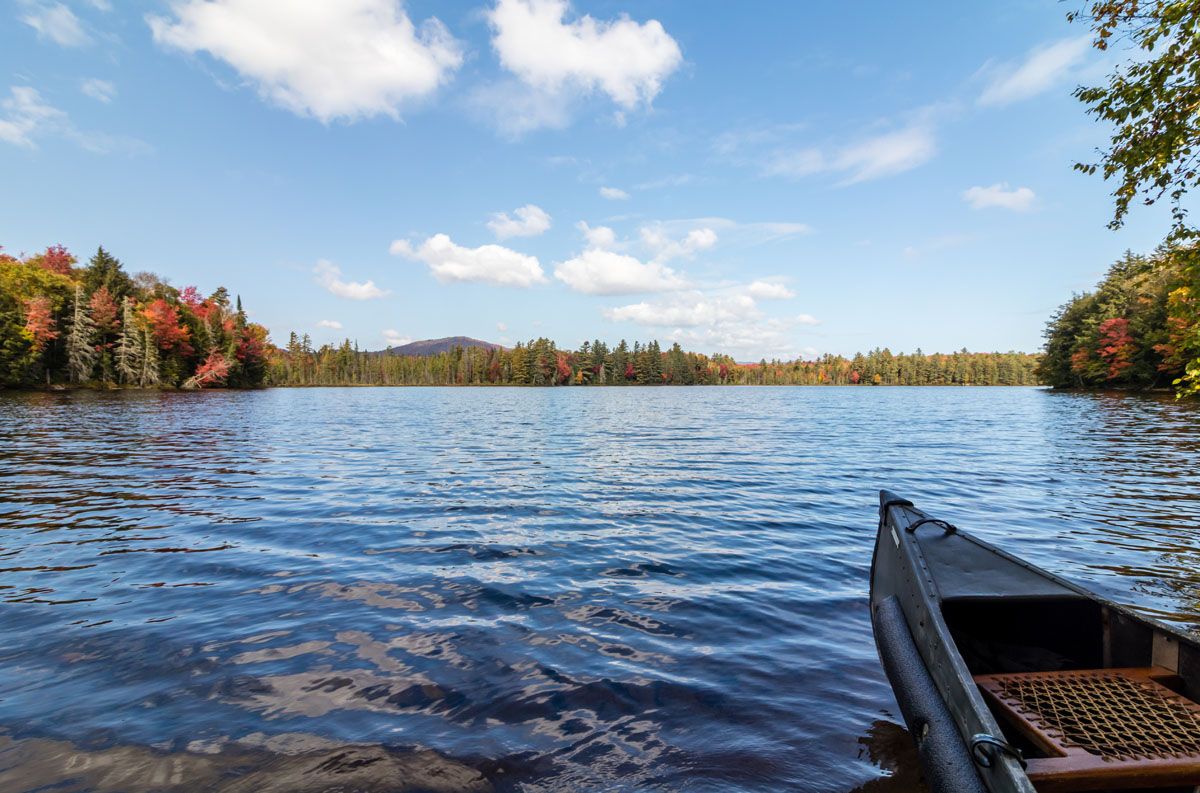
For us, it is a very relaxing vacation. Stepping away from the day-to-day life at home, being outside, and enjoying all it offers can be very rewarding. If you have the bug already, I'm sure you will agree.
It is evident in so many ways that recreational camping is very popular. It is hard to drive down the highway at any time of day and not spot a rig (RV) heading down the road or a car loaded to the brim with gear, often including kayaks.
Whether you are a seasoned camper, a newbie, or want to give it a try, there are things you need to think about to make it a successful experience.
THE PLAN:
It is always good to think and plan your camping trip, no matter what the length will be.
A plan will help you lead to a positive experience.
When my wife and I decided to take a cross-country trip, we spent months figuring out all the details… Length of time, where we wanted to go, what we wanted to see, and where we would choose to stay were just a few of the things we needed to consider.
Length of time:
A camping trip can be an overnight, a weekend, one, two, or multiple weeks—whatever works for you. Naturally, a longer time allows you to do more and see more, but you must decide how much time you have for the trip and getting ready. For a first timer, a shorter time might be better so the whole adventure doesn't get overwhelming.
Hopefully, you will get hooked, and there will be many more trips in the future!
Destination:
Where do you want to go? How far is it to get to and from? These decisions should be part of the time you have to spend on the trip. Once you are there, where can you camp? There are many options for camping in a tent or a recreational vehicle in New York State and across the United States, each offering a unique and exciting experience. It is important to note that most state, national, and private campgrounds require reservations. To secure your preferred camping dates and locations, it's advisable to book as early as possible, especially during the peak seasons.
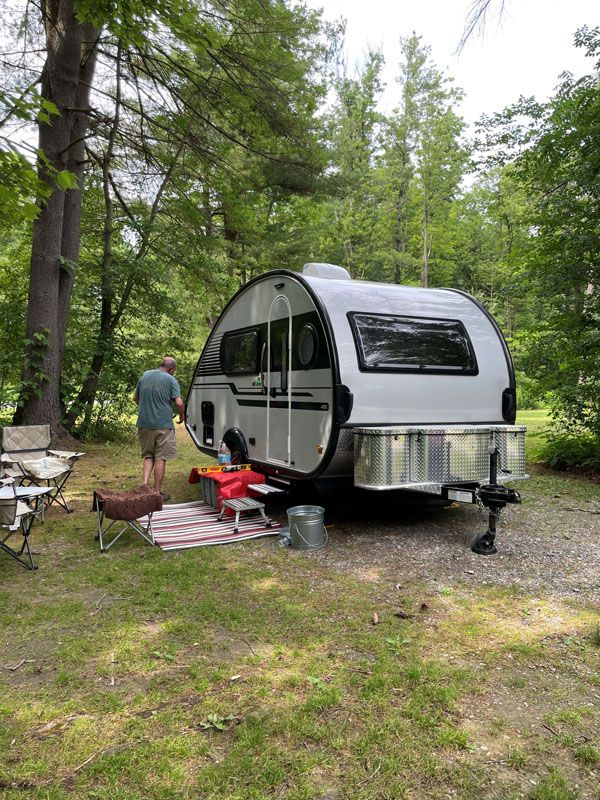
• State Campgrounds
Your state is the best place to start if you are a newbie because it is often close to home. New York State has two public state park systems: one operated by the New York State Parks, Recreation and Historic Preservation, and the other operated by the Department of Environmental Conservation.
The Department of Environmental Conservation (DEC) campgrounds in the Adirondack and Catskill Parks offer diverse experiences. These include island camping, tent and trailer camping, boat launching facilities, hiking trails, beaches, playgrounds, and campfire areas.
New York State Parks are outside the Adirondack and Catskill Parks, and many provide additional camping amenities, such as electricity, and lodging facilities, such as cabins, yurts, and cottages.
• National Campgrounds
These campgrounds, which include National Parks, National Forests, and those built and managed by the US Army Corps of Engineers, are situated across the United States and its territories. Many of these locations provide campsites for tents and recreational vehicles.
National Parks preserve an area's natural beauty and cultural heritage and offer recreational and educational opportunities. Passes are available to reduce yearly and lifetime admission and camping fees.
• Regional Campgrounds
Local governments, such as counties, cities, and villages, operate these campgrounds. Their regulations are often more relaxed than state and national parks and may not require reservations. However, it's always important to check before heading out.
• Private Campgrounds
Private campgrounds, operated by residents or private companies, offer a range of amenities and services, making them a popular choice for camping enthusiasts. While they may be more expensive than public campgrounds, the additional comforts and conveniences can make the experience well worth it for some people.
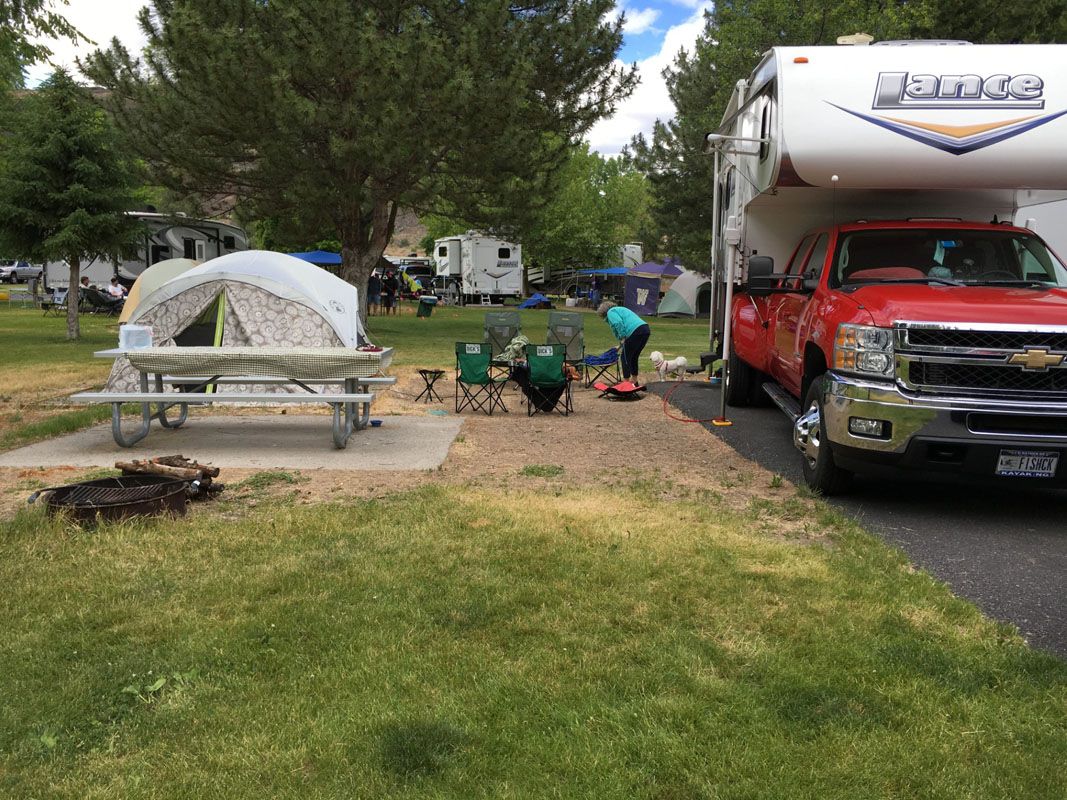
Equipment:
Equipment needs are one of the most significant areas of consideration for decisions when planning a trip. If you are already lucky enough to have access to camping equipment, you are a step ahead. In most cases, that isn't the norm. This is also the time to consider your budget. Camping can be an economical way to travel and vacation, but depending on your choice, it can get costly.
Another thing to consider is whether there is someone in your circle from whom you could borrow things or rent equipment.
Before you jump in and make purchases, you need to consider these things:
• Age of the campers. Adults and Children often have different needs that should be considered.
• A sleeping plan: a dry, comfortable bed (ground mat, cot, air mattress) and blankets or sleeping bags to stay warm.
• Protection from the elements for sleeping, cooking, and weather (rain, sun, etc.)
• How will you prepare meals and have an efficient way to prepare them? Keeping things simple will make things easier in the long run.
• Clothing needs. Be prepared for all forms of weather. Know the temperature and terrain of the area you are going to so that you have the appropriate footwear and always have a hat handy.
• Always remember safety. Cutting corners to save money or time can often lead to unwanted consequences. Have a first aid kit, prescription medications, suntan lotion, and bug repellent.
• Bottled Water: Check ahead to see if the campsite has public water or if it is available for purchase.
Some equipment choices to consider:
• Tent
Tents are the cheapest and come in all shapes and sizes. Before you make that purchase, consider how many people will be using it so that all the sleeping and personal gear will fit. Also, check how easy it is to set up and whether it includes a ground cloth and rain shield.
• Screen Room, E-Z UP, and rain shelter
It's always nice to have one to avoid the elements and enjoy the outdoors with some protection.
• Recreational Vehicles
Commonly called RVs, they come in all shapes and sizes. For many, an RV is the only option, providing complete off-the-ground indoor comfort and protection. You may need a tow vehicle to pull the unit, depending on your RV type. Before towing, you must know your vehicle's towing capacity and ensure the proper hitch is attached. The size and weight of the RV will determine what size tow vehicle you will need. As you go through the list of RVs, the cost to purchase and operate also increases.
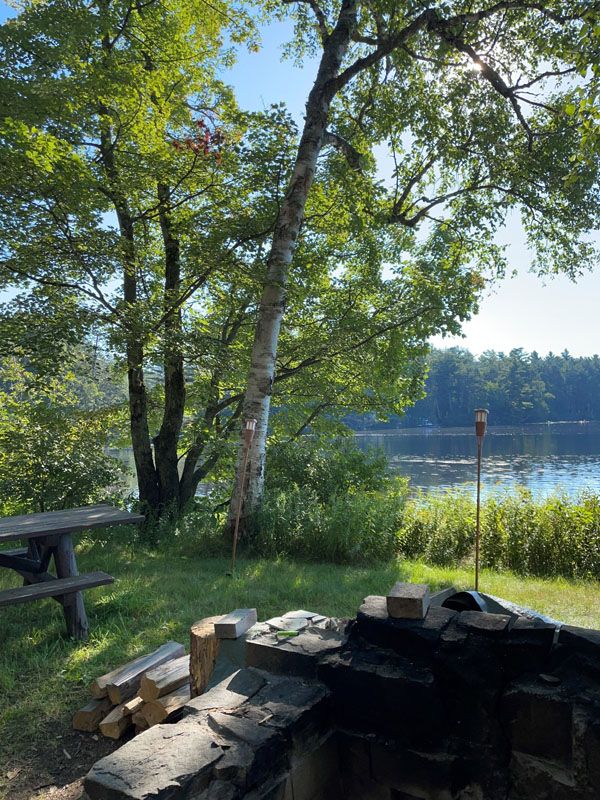
Common types of RVs:
• Pop-up Campers
Pop-up campers are great options for people transitioning from a tent to a low-budget trailer. This camper usually has a hard bottom containing the dinette, kitchen, toilet or shower (if equipped), and storage. When you pop out the canvas sides, you have expanded living space, usually with beds that sleep up to four. When you're ready to travel, the sides collapse into the bottom of the trailer, providing a flat surface that is easy to see when driving.
• Travel Trailer
This type of trailer, often called a tow behind, is a popular RV in various sizes and weights. Travel trailers provide many amenities, including a two-way fridge that operates on electric power and a 12-volt battery. Some older models can often operate on propane. They also have propane stoves, microwaves, 12-volt lighting, sinks, hot water tanks, heat and air-conditioning. Their best amenity is a bathroom and often even a shower. Many also have slide-outs that increase the inside living space and can have an awning on the outside to give you a covered area out your door.
• Truck Camper:
This type of camper fits in the bed of a pickup truck. It can accommodate up to four people, depending on the specific model. It includes living and sleeping facilities, and many of the same amenities that travel trailers provide, including a bathroom. Some lighter-weight campers have a pop-up roof to offer more headroom, whereas larger campers have solid sides and a higher ceiling to provide extra height and often a slide-out, creating a more spacious feel. The truck's size needed to transport the camper depends on its weight. Many campers like the truck camper, as it is toy and boat-friendly, allowing you to tow something behind you.
• Fifth Wheel
The fifth-wheel camper differs from a travel trailer because it utilizes a different towing method and must be towed with a truck. It connects a pin box from the front of the trailer to a U-shaped coupling mounted in the truck's bed, providing a more stable and smoother ride. However, it is longer and heavier than a traditional travel trailer.
Fifth-wheel campers are often two-leveled, extending the bedroom over the truck bed. The living space is on the lower level. It may include more amenities, such as multiple slides to increase living and office space, an outdoor patio, an outdoor kitchen, and even a garage to carry motorcycles, kayaks, bikes, and other large items.
• Class C Motorhome
Class C motorhomes are built on a van chassis and run on gas. They are more popular because they are easy to drive and park. The cabover bed that extends over the camper's cab can quickly identify these motorhomes, providing additional sleeping space or storage. Most class C's have a bedroom, a bathroom equipped with a shower, a dinette-sleeping area, and a kitchen, and they can transform into larger living spaces with one or two slides. They can also tow a smaller vehicle, trailer, or boat.
• Class B Motorhome
Class B motorhomes, or camper vans, are compact and easy to drive. They are equipped with gas or diesel engines, fit into standard parking spaces, and feature small kitchens and living and sleeping spaces. Some models also come with showers and toilets. They also can have the capacity to tow.
• Class A Motorhome
Class A motorhomes are the most significant type of motorhome. They resemble a bus. The smaller Class A motorhomes can run on gas, but the larger ones require diesel. Regardless of the fuel used, these motorhomes have poor fuel efficiency. Most of these RVs offer residential appliances, upgraded indoor living facilities due to one or more slides, and ample indoor and outdoor storage space. They also have the capacity to tow.
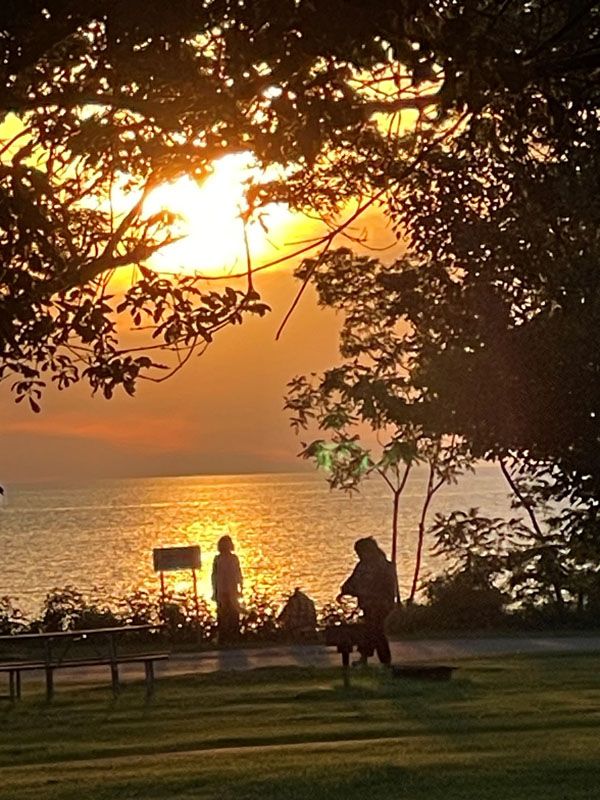
So Why Camp?
Hopefully, you will be inspired to plan a trip or go camping again, especially if it has been a while. There's so much out there waiting to be explored and experienced.
LIFE IS BEST WHEN YOU ARE CAMPING!
CAMPING IS… Sitting by a crackling fire, Making new friendships or rekindling older ones, Listening to nature, Meeting new birds and other wildlife, Sparkling stars and full moons, The call of a loon, Napping often, Watching the sunrise and sunset, The smell of coffee perking, Cooking over an open fire, Having a cold one, Taking a hike, Catching a fish, Pitching a tent, Digging a ditch, Chopping wood, Singing campfire songs, Listening to the rain hit the roof of the tent or camper, Taking a swim, Making popcorn and last but not least making S'mores and new Memories!
Enjoy!